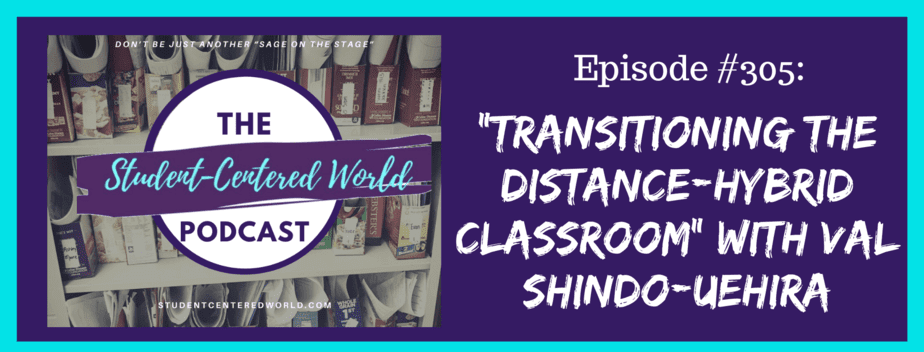Teacher Timing: How to Make Your Planning Hours Work for You
Click above to listen to Podcast Episode 24: “Determining Teacher Timing“
Educators today face a monumental task: managing effective lesson planning amidst constantly shifting schedules. The move to hybrid and unpredictable models has made teacher time management more critical than ever. Mastering new teacher time management tips is essential to not only survive but thrive in this new educational landscape.
For the typical teacher, the school year is always a juggle, but recent shifts have intensified the pressure. The question of how much time to allocate for instruction, both in-person and digital, is more complex than ever. Whether you teach in public schools or are one of the dedicated family child care providers working with preschool children, the core challenge remains: how do you accomplish all your most important tasks within the constrained school hours?
The Shift in Scheduling and Its Impact on Teachers’ Work
Many districts are implementing altered schedules, such as hybrid models where students split time between the school building and home. An elementary teacher might have students in class for two days and learning digitally for three, while a high school might operate on an A/B week rotation. This constant shift means that the traditional approach to lesson plans is no longer sufficient.
A typical teacher can no longer simply ask, “How long will this unit take?” Instead, the question must become, “How can I teach this concept effectively within my allotted in-person and remote windows?” This requires a fundamental mindset shift. The goal is to structure learning in cohesive blocks, perhaps by the week or over a three-week cycle, that seamlessly blend in-class and digital instruction. This proactive planning is essential to prevent unmanaged time from eroding both learning and your personal time.
Practical Strategies for Efficient Lesson Planning
The key is to be intentional. Instead of letting your schedule dictate a frantic pace, use proactive approaches to control your teacher time management. Here are some practical strategies to reclaim your time:
Chunk Your Curriculum:
Look at your curriculum for the week or unit. Identify the essential tasks and creative tasks that will drive learning. Plan your in-person school day for collaboration, hands-on activities, and addressing complex student behavior or needs. Reserve asynchronous digital time for introductory content, reinforcement, and independent practice. This ensures you are using each modality for its strengths. For new teachers, especially, this method of breaking the school year into manageable steps is a crucial professional development strategy. It prevents feeling overwhelmed by the sheer scope of the curriculum and allows you to dedicate enough time to each specific task.

This intentional structuring also creates natural short breaks within the instructional flow, which can be used for formative checks or to support young children who need redirection, making your classroom management more effective and responsive. By thoughtfully grouping activities, you ensure that every minute, whether in the school building or at home, is purposeful and aligned with your learning objectives for all grade levels.
Embrace a Flipped Model:
The flipped classroom approach is a powerful tool for hybrid learning. Use digital time for students to gain foundational knowledge (e.g., through videos or readings), freeing up precious in-class time for discussion, projects, and application. This maximizes the impact of face-to-face interaction. This model is a fantastic teacher time management tip as it fundamentally reshapes how you use your prep time and in-class energy. Instead of spending a lot of time on direct lecture, you can focus on facilitating deeper understanding and fostering emotional skills through Socratic seminars or group projects.
For an elementary teacher, this might mean students watch a short video on a science concept at home, so they are ready to conduct an experiment together in class. This shift not only improves engagement but also empowers students to take ownership of their learning. It transforms the teacher’s role from a dispenser of information to a guide for exploration, which is a core principle of intentional teaching and can help restore the joy of teaching by focusing on the most interactive and rewarding parts of the job.
Prioritize Your To-Do List:
A teacher’s to-do list is endless. To protect your personal life and well-being, you must identify your top priority tasks each day. Differentiate between logistical tasks (like updating bulletin boards) and analytical tasks (like assessing student work). By focusing on what truly moves the needle for student learning, you can spend less time on lower-impact activities. A key strategy is to tackle the most demanding analytical tasks during your peak focus periods, perhaps during a protected prep time, while leaving less cognitively demanding logistical tasks for the end of the day.
This approach to teacher time management tips is vital for preventing burnout and safeguarding your mental health supports. Remember that what the general public needs to understand is that a teacher’s work extends far beyond the final bell, and setting these boundaries is essential for sustainability. Consistently applying this filter to your teachers’ work ensures that your energy is invested in the most important tasks, leading to greater job satisfaction.
This practice allows you to leave work at work, protecting your valuable personal time and ensuring you have the capacity to be fully present both for your students and your own personal life.
Protecting Your Time and Well-Being
Effective teacher time management isn’t just about the students; it’s about the educator’s sustainability. Studies from the EdWeek Research Center and institutions like Merrimack College highlight that long hours and constant demands are major factors affecting job satisfaction and mental health.
Maximize Prep Time and Common Planning Time
Use these blocks for their intended purpose. Break down lesson plans into manageable steps with your colleagues. This collaboration time is invaluable for sharing the load and generating ideas. To make the most of this, come to each session prepared with a clear agenda, ensuring that the conversation remains focused on student learning and instructional strategies rather than devolving into general updates. This dedicated period is also an ideal opportunity for grade levels to align on assessments and share practical strategies for addressing common student behavior patterns.
For the typical teacher, this shared prep time can be a lifeline, transforming an isolated planning period into a dynamic think tank. By pooling collective expertise, teachers can develop more robust, differentiated lesson plans and creative tasks, which ultimately saves everyone a lot of time and reduces the burden of working in isolation.
This proactive approach to collaboration time is a cornerstone of effective professional development and is essential for fostering a supportive school culture where teachers feel equipped and valued, directly impacting their job satisfaction and effectiveness throughout the school year.
Set Boundaries:
The workday cannot extend indefinitely. Make it a rule to stop working after the day’s final school bell rings whenever possible. Protecting your personal time is not a luxury; it’s a necessity for preventing burnout and preserving the joy of teaching. This requires a conscious effort to resist the temptation to bring grading or lesson planning home every night. Start by identifying one or two weeknights where you commit to leaving work at the school building, using that evening for your personal life, hobbies, or rest.
This practice is one of the most critical teacher time management tips for sustaining a long-term career. It is especially crucial for toddler teachers and those working with young children, as the physical and emotional demands of the day are exceptionally high. By consciously creating this separation, you are not shirking your duties; you are engaging in a vital form of self-preservation.
This discipline ensures you have the emotional capacity and energy to be fully present for your students each day and helps combat the culture of long hours that often leads to unmanaged time and stress, safeguarding your own well-being.
Advocate for Support:
The general public needs to understand the complexity of teachers’ work. From managing class size to addressing the need for mental health supports, these are not just individual challenges but matters of social policy. Advocating for systemic support is part of the solution. This means speaking at school board meetings, writing to legislators, and sharing the realities of the classroom in a way that highlights the need for adequate resources and additional time for planning and collaboration.
Research from the EdWeek Research Center and institutions like the Winston School of Education consistently shows that factors like class size and the availability of mental health supports are directly linked to both student success and teacher retention.
By articulating how systemic issues impact everything from bulletin boards to the ability to handle complex student behavior, educators can shift the narrative. Advocacy is not a complaint; it is a proactive approach to improving conditions for everyone within the public school system. It is about demanding the structures that allow teachers to focus on their most important tasks…inspiring students and fostering growth…rather than being overwhelmed by logistical and systemic constraints.
Reclaiming the Joy of Teaching
Whether you are a new teacher or a veteran toddler teacher guiding young children, your time is your most valuable resource. By implementing intentional teaching strategies and robust teacher time management tips, you can transform unmanaged time into productive, focused blocks. This allows you to dedicate your energy to fostering emotional skills and a love of learning in your students, regardless of their grade levels.
Remember, the goal is not to create a perfect schedule, but a flexible one that serves both you and your students. By taking control of your time, you ensure you have enough time not only for your essential tasks but also for your personal life, ultimately keeping your passion for education burning brightly.
For more professional development and student-centered ideas, visit Student-Centered World. Have questions or need further practical strategies? Feel free to reach out…I’m here to help you thrive this school year.
This article was originally published on December 26, 2020.





